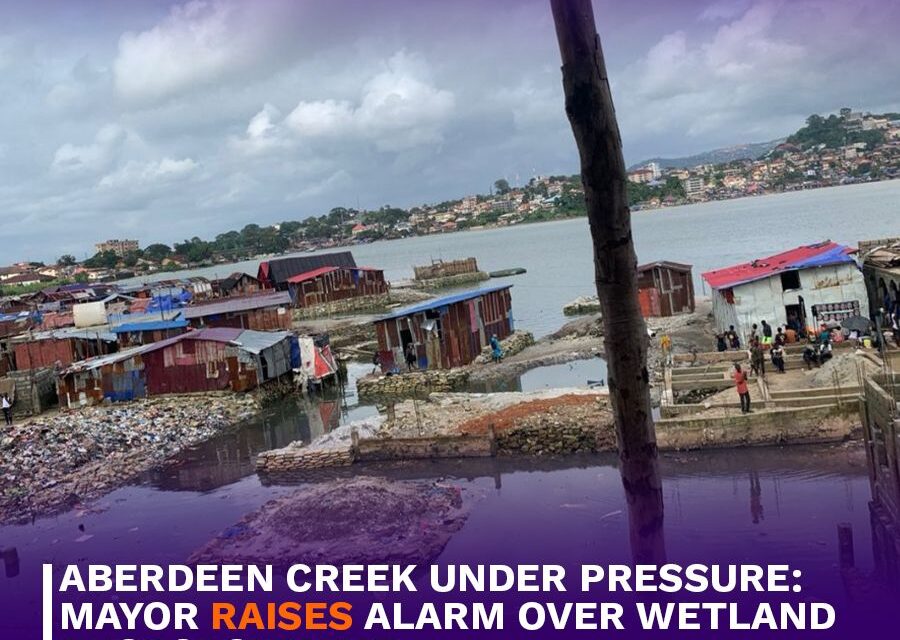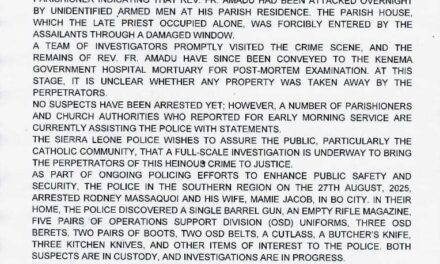By Davida Spaine Solomon
Freetown, September 26th 2025- Just days after the eighth anniversary of the 2017 mudslide that claimed over 1,000 lives, Mayor Yvonne Aki-Sawyerr has sounded the alarm over renewed construction activity at Aberdeen Creek, warning that unchecked development in the city’s wetlands could set the stage for future disasters.
In a statement posted to social media, the mayor urged for the preservation of Freetown’s “natural defences,” cautioning that the backfilling of wetlands—especially Ramsar-designated sites like Aberdeen Creek—could worsen flooding and accelerate environmental degradation.
Her warning comes as drone footage and mobile videos circulate online, showing heavy machinery reshaping the creek’s landscape. Once a thriving ecosystem of mangroves, bird nesting grounds, and fish spawning zones, Aberdeen Creek has shrunk dramatically—from 537 acres in January 2017 to just 458 acres as of February 2025, according to Google Earth imagery.
Aberdeen Creek is part of the Freetown Estuary, one of Sierra Leone’s most ecologically significant wetland systems. These wetlands act as natural water filters, shoreline stabilizers, and buffers against storm surges. Mangroves, in particular, are vital carbon sinks and flood barriers—critical assets in a city increasingly vulnerable to climate shocks.
Environmentalists warn that continued encroachment could trigger cascading effects: loss of biodiversity, declining fish stocks, and heightened flood risk for low-lying communities. “Wetlands are not wastelands,” one conservationist noted. “They are life-saving infrastructure.”
Aberdeen Creek is protected under both international and national frameworks, including the Ramsar Convention and Sierra Leone’s Environmental Protection Agency Act of 2008. Local planning regulations also restrict development in sensitive zones. Yet enforcement remains patchy, with oversight often undermined by political and commercial interests.
Not everyone agrees with the mayor’s assessment. Mr. Bockarie Hindowa, a long-time resident of Aberdeen Creek, insists the situation is under control. “The EPA marked zones for human activity, and we’ve planted mangroves. No illegal activity is happening in the water,” he said. “The fears online are exaggerated.”
Youth leader Alex Kamara echoed the sentiment, saying the community supports both development and conservation. “We’ve been educated on wetland protection and are actively monitoring the area,” he said.
Fish sellers like Mr. Mohamed Deen also pushed back against the alarm. “We’re still catching fish. The river is healthy. These rumours are scaring people unnecessarily,” he said.
Despite local reassurances, environmental experts maintain that Aberdeen Creek is too fragile to absorb further construction. They argue that preserving wetlands is not a luxury—it’s a necessity for Freetown’s long-term resilience.
As urban expansion continues, the city faces a critical question: Can it balance growth with ecological stewardship? With Aberdeen Creek’s future hanging in the balance, the debate is far from over.









